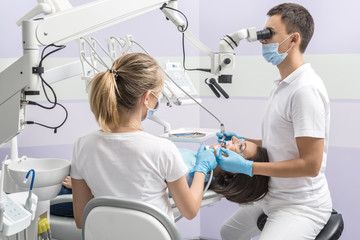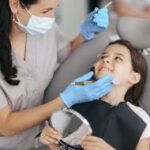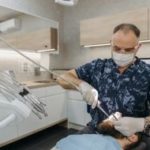Technical Tips to Buy a Dental Microscope

Dentistry is a profession that requires a lot of precision and a dental microscope is very crucial for one’s practice. Microscopes are complex devices that have helped science and technology from centuries to progress ahead. Medical fraternity too uses microscopes for research and observation for accuracy. Dentistry is a very sensitive practice and needs magnification to identify problems that could arrive from teeth. Dental microscope which is used to observe the finest details is also made up of us such fine elements and lenses. Before buying a dental microscope, it is wise to know these technical details to make an informed decision. Read on to know.
Technical Tips to Buy a Dental Microscope
1. Go for the Right Magnification
The most and foremost thing you need to know about a dental microscope is the magnification dentistry requires. In a microscope, both objective lens and eyepiece contribute to the magnification and both vary in their level of magnification. Typically, dental practice requires that the objective lens ranges from 300-400 nm. The eyepiece magnifies any image passing through it after the objective lens by 10 times. Anything less than 300nm is not recommended as it affects precision and might cause problems.
2. Ensure it is Ergonomic
It is easy to see if the dental microscope can be moved around and bent easily. Dentists must check many clients daily and should lean /bend to check the client’s mouth lying on the rest chair. It would be very convenient for the dentist to treat the problem if he/she doesn’t have to do much physical work. The ergonomics and flexibility of the microscope can be increased by using wall and ceiling mounts to position the microscope as required. Mounts must be installed by professionals and if you are renting the hospital space, permission of the owner must also be taken.
3. A Good Light Source
To look deep into the mouth and reach for corners the microscope needs a good light source. A dental microscope will have objective lens and eyepiece which work properly only when there is a good light source. Incandescent bulbs are not recommended as they are too bright for an observation and neither florescent bulb is the best choice. Using LED light is the newest technology and the best lighting source for a dental microscope. LED bulbs are much focused and bright, the durability is much higher than incandescent and florescent bulbs, and above all it saves a lot of energy. An efficient light source as LED is thus the perfect choice of light source for a dental microscope.
4. A Digital SLR Included
Most of the advanced microscopes in medical industry have a digital SLR attached to them to view and document the observation for reference or for the viewing of the patient. A dental microscope too needs to have a digital SLR to reach out to areas remote and discreet and document the observation for reference in the future. High resolution images and videos can be generated to view the same observation multiple times for better understanding and accuracy. The output of the camera can be viewed on computer and TV screens.
5. A Fine Optical System
A dental microscope must have the finest optical system to produce high resolution images with the highest quality and clarity. The optical system will also provide a continuous range of magnifications giving more flexibility to the dentist to control his/her movements and observation. Precision is something dentistry needs to provide the right kind of treatment to the right area. Hence, while buying a dental microscope ensure that it has a fine optical system that will offer reflection-free, durable optics.
Apart from these factors also consider your vendor’s experience in selling dental microscopes and the amount of knowledge they possess over the device. Also, consider financial and maintenance issues associated with the microscope and ensure you are dealing with the right vendor. If you are using mounts and practice in a rented space, enquire the owner of the commercial space about this and if they have any problems with you installing the device on walls and ceilings.







